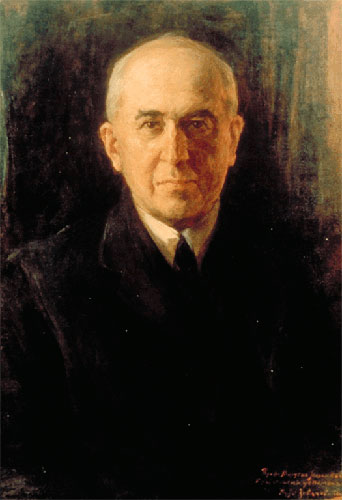On September 1, 2023, the Orthodox Church of Ukraine and the Ukrainian Greek Catholic Church will switch to the New Julian calendar. At first, it may seem that this is a regular Gregorian calendar, which in our era is 13 days ahead of the “old” Julian calendar, so we will celebrate St. Nicholas on December 6 instead of December 19, and Christmas on December 25 instead of January 7 (along with the Catholic and Protestant churches). In reality, everything is a bit more complicated and interesting…
For almost all of its history, humanity has been trying to create a time reference system that would best reflect the ratio of the duration of the periods of the Earth’s rotation around its own axis (the daily cycle) and around the Sun (the annual cycle). The problem is that these periods not only do not correlate as integers, but are not constant. That’s why the number of days in a calendar year needs to be changed from time to time, “adjusting” them to the actual passage of time. And it would be best if this “adjustment” was carried out in accordance with a simple, easy-to-remember rule.

The Julian calendar, introduced in ancient Rome, was based on the fact that the length of a year is 365 and a quarter days. In other words, to correlate the length of the two most important periods, it is enough to add one “extra” day every 4 years. Since the ancient Roman calendar ended in February, it is still traditionally added there. It was believed that this ensured that the dates of the equinoxes and solstices — and thus the “fixed” church holidays — would remain constant for millennia to come. But in the 16th century, when more accurate methods of measuring time intervals and celestial coordinates appeared, it became clear that the calendar vernal equinox was far behind the astronomical one, which fell not on March 21, but on March 11.
This led to the calendar reform. It took into account the newly calculated length of the year — the interval between two consecutive vernal equinoxes, defined as 365.2425 days — and established easy to remember rule for adding a “leap” days to some years. It’s really simple: if the first two digits of a year ending in two zeros are not divisible by 4, it falls out of the “general” 4-year period, and February has 28 days in it. So, in 2000, there were 29 days, since its first two digits (20) are divisible by 4 without a remainder. That is, the main cycle is now not a 4-year cycle, but a 400-year cycle, during which there are 97 leap years.
In this calendar, an error of one day accumulates over 3280 years, which is more or less acceptable for everyday use. It was immediately adopted by the Catholic Church, and later by the Protestant Church. For the new chronological system, methods were developed for determining the dates of “movable” church holidays, primarily Easter. However, the Eastern Rite churches did not recognize this innovation and continued to use the Julian calendar, which was increasingly “behind” astronomical time.
To a certain extent, this lag could be tolerated, but gradually more and more church hierarchs realized that something had to be done about it, at least because “under the old order” in three thousand years the latest dates of Easter would have fallen in early June of the Gregorian calendar, which is used by the majority of the Christian world. And then Milutin Milankovic, a professor of celestial mechanics at the University of Belgrade, came to the rescue. He had long been engaged in the development of a timekeeping system that would ensure the best possible matching of the length of the day and the year. In the 19th century, it was already known that the ratio between them was expressed by the number 365.2422, and the scientist proposed the most accurate approximation of its non-integer part as a fraction of integers 218/682. It could be achieved by introducing a 900-year cycle in which the rule of a leap day every 4 years is preserved, except, again, for those years that end in two zeros, but among them those whose number, when divided by 900, gives a remainder of 200 or 600 are considered leap years.

This system was described in an article published in 1923 in the journal Bulletin of the Serbian Royal Academy of Sciences and Arts and was called the “New Julian calendar.” In May of the same year, a council of Orthodox churches convened by Ecumenical Patriarch Meletios IV took place in Constantinople. It generally decided to switch to the new calendar, but was in no hurry to implement it. The Church of Constantinople did so in 1924, followed by the Polish and Romanian Orthodox Churches in the same year, the Alexandrian and Antiochian Churches joined them in 1928, and the Bulgarian Church — in 1968.
Nowadays, the Gregorian and New Julian calendars coincide, and the difference of one day between them will only appear in 2800 (which will be a leap year according to the Gregorian calendar, but not according to the New Julian calendar). This will last throughout the twenty ninth century, then the difference will disappear and reappear in 3200. By then, the Gregorian calendar will be 22 days ahead of the “old” Julian calendar.

As for the “movable” Christian holidays, the dates of which are not tied to specific days, they have decided to celebrate them in the old way, that is, to calculate Easter, they will continue to use the tables compiled in the VI century by Dionysius the Little. Therefore, we will now celebrate Christmas, Epiphany, Presentation, Savior, and Intercession 13 days earlier, as the Western rite churches do. But Easter and Trinity will remain our own, although the need to somehow modernize their calculation will still arise at some point. However, this issue will not be really relevant for the next few hundred years.
Earlier we wrote about why churches of different rites determine the date of Easter in their own way.

